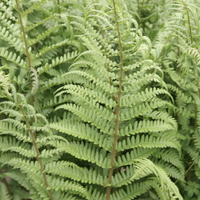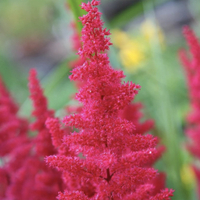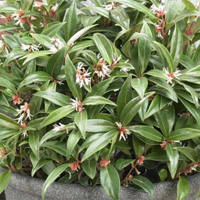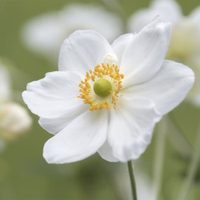The best plants for shade — 12 options that will thrive in north-facing gardens
A shaded area doesn't have to be an empty void in your garden
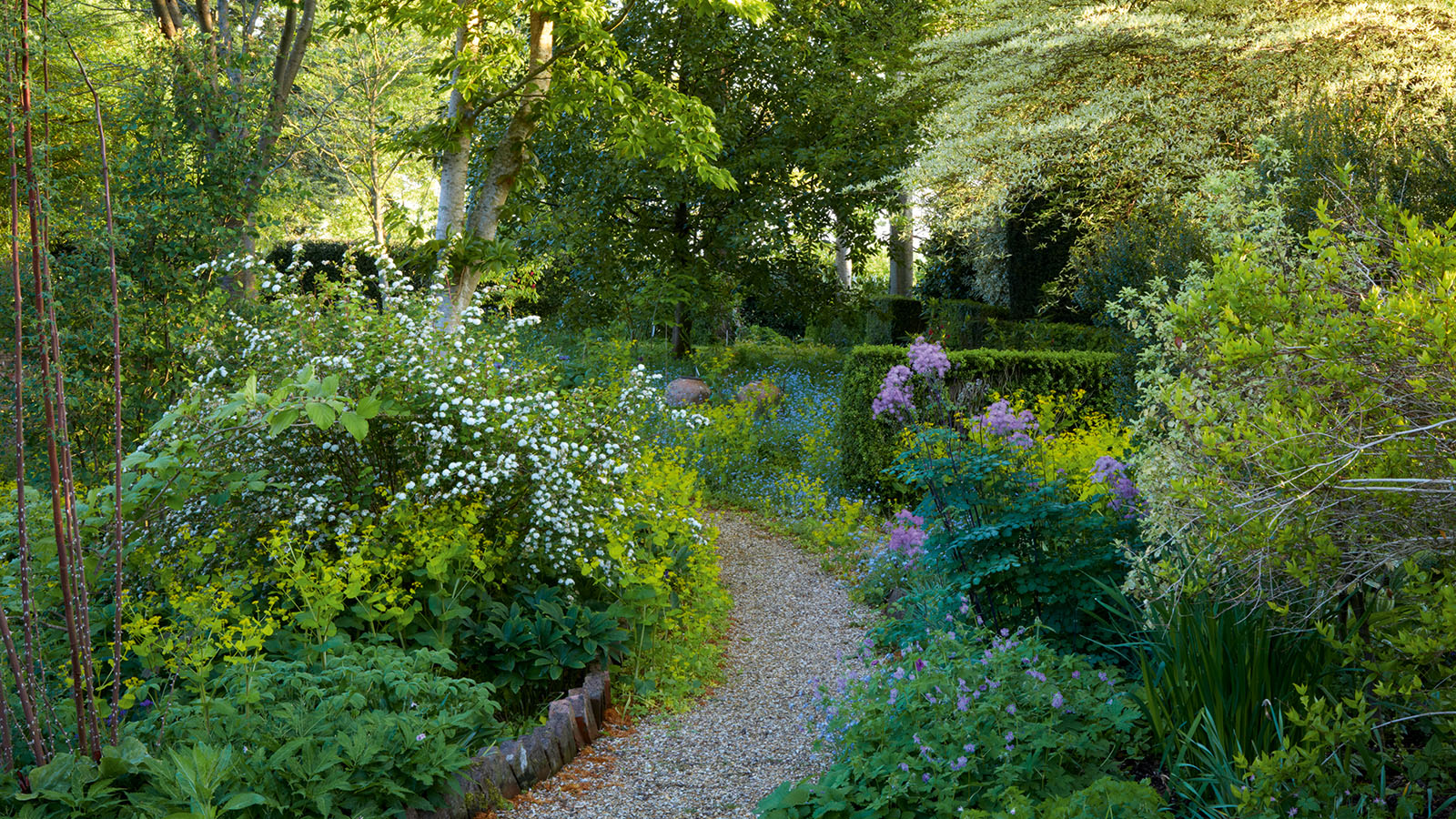
For gardens that are north-facing or have areas prone to shade, plant choices are absolutely key. Smaller urban gardens, areas near fences and under trees, are all spaces where you need to consider plants for shade.
"You might not get a sea of never-ending blousy blooms in your garden design but planting for shade can still be fun. It’s more about creating a tapestry of textural evergreens peppered with flowers," says garden designer Harriet Worsley.
"Contrasting the different leaf textures, shapes and sizes is important, as more emphasis will be on the foliage rather than the petals," says Harriet.
12 of the best plants for shade and north facing gardens
There is a difference between plants in your garden landscaping which will tolerate deep shade and semi-shade as Harriet Worsley explains:
"A lot of plants can work in the sun, and tolerate light shade, but not as many will survive in deep shade (for example when planted under a dense tree all day). So always read the label, boring but essential."
1. Hostas
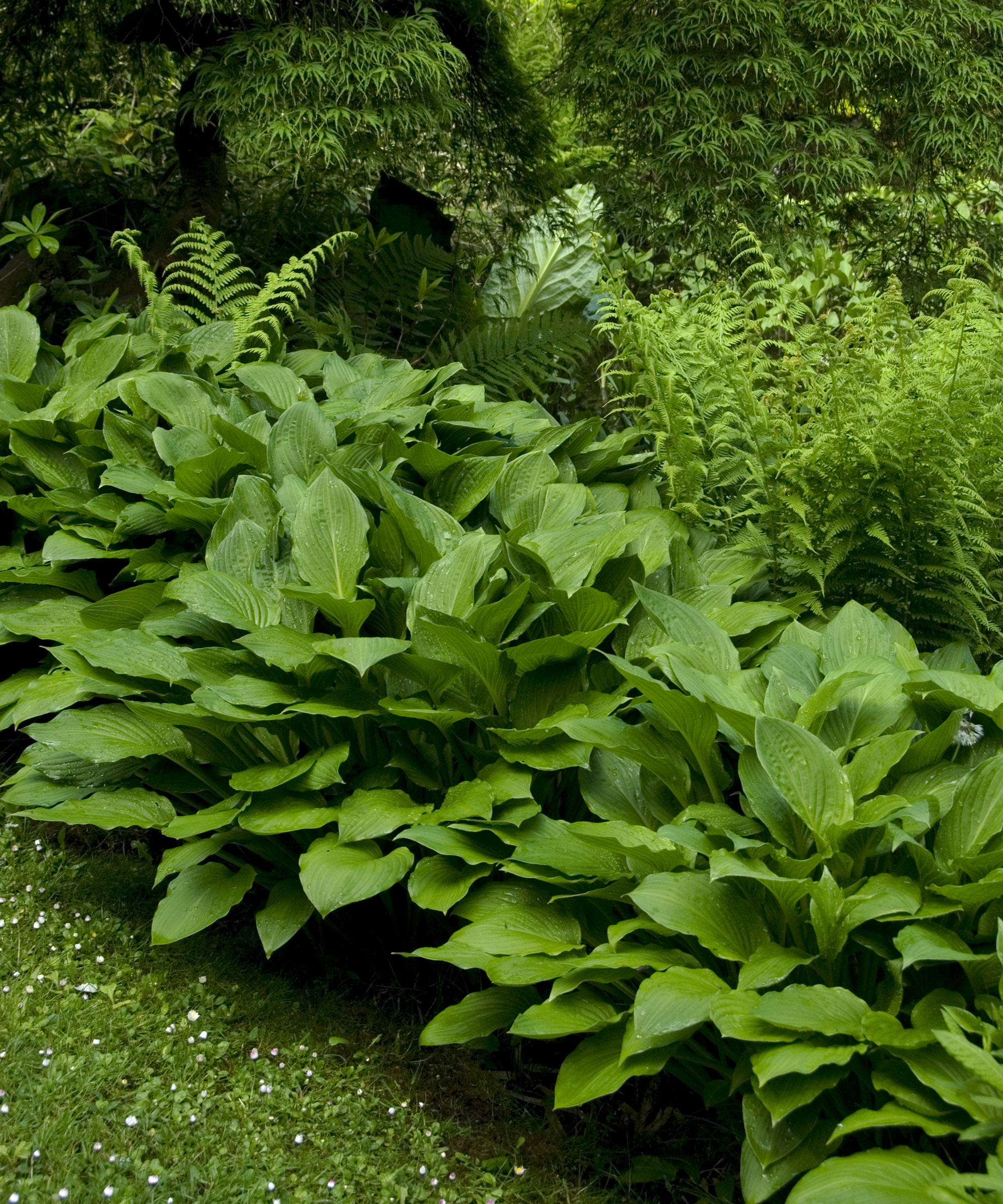
“Hostas are the classic shade plants, known for their lush foliage in a variety of shapes, sizes, and colours. They make low-maintenance garden ideas and are incredibly versatile, thriving in partial to full shade. Regular watering and occasional fertilization will keep them looking their best. But watch out for slugs and snails, which can damage their leaves," says Hannah Rowson, Assistant Garden Centre Manager at J. Parker’s
Expert gardener Nick Hamilton recommends the variety Hosta ‘Revolution’ at Barnsdale Gardens.
"This fabulous, herbaceous foliage plant with its green leaf having a bright white centre lights up a dull, shady spot. Although primarily grown for their leaves this variety also produces spikes of pale lavender flowers in summer," says Nick.

Assistant Garden Centre Manager, Hannah Rowson, has been with bulb specialist J.Parker's for over 8 years. RHS qualified, Hannah is a fountain of knowledge for all things gardening and horticulture, and has even had her garden designs displayed at RHS Tatton Flower Show.
2. Ferns
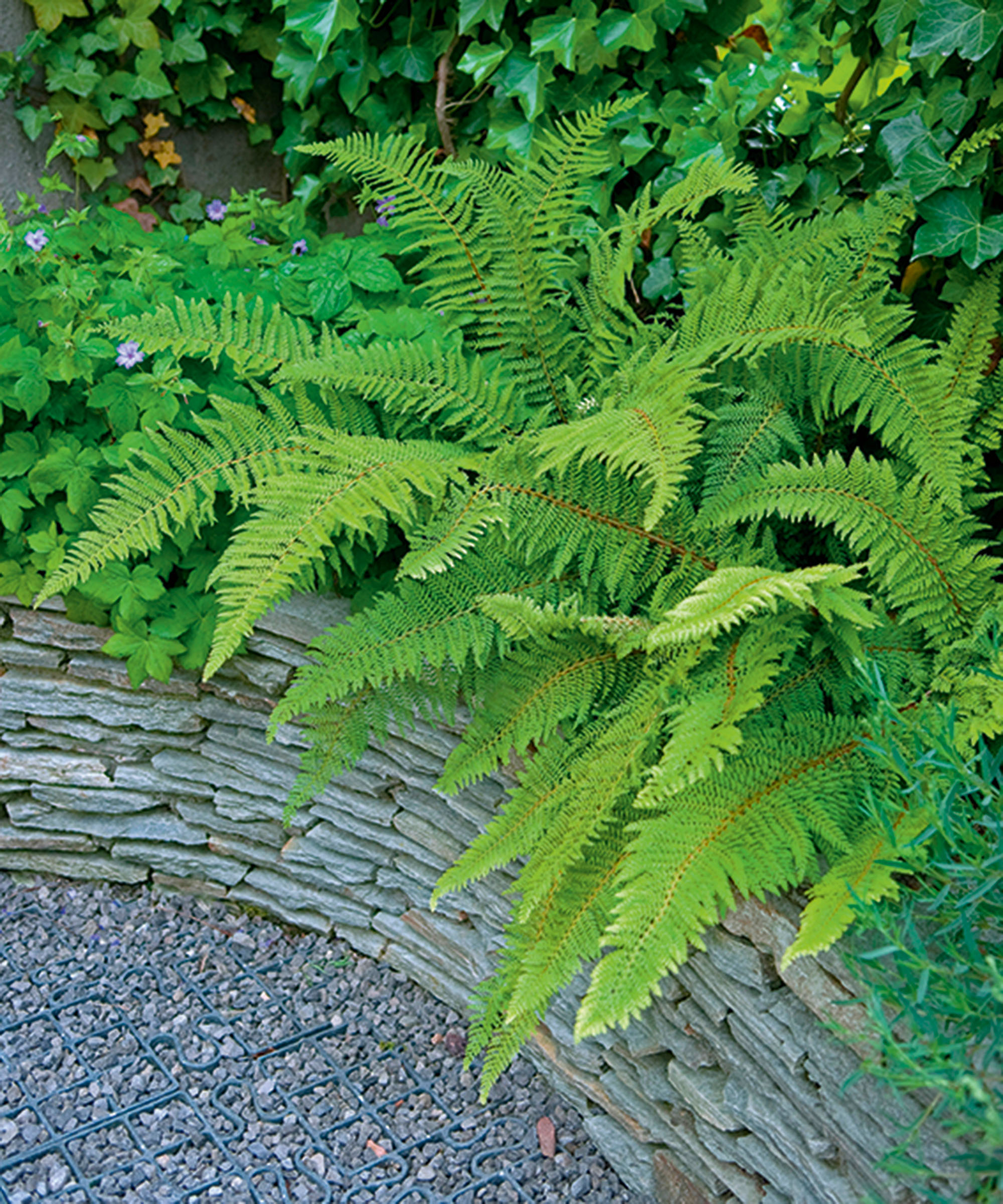
"Ferns bring a timeless elegance to any shaded garden or patio planting with their delicate, lacy fronds. There are many varieties to choose from, such as the Japanese painted fern and the ostrich fern. They thrive in rich, moist soil with good drainage. Overall, Ferns require minimal care, but ensuring they don’t dry out is key to their success," says Hannah Rowson.
Nick Hamilton recommends the semi-evergreen fern Dryopteris affinis ‘Cristata The King’ to add both colour and structure to a dull spot.
"This elegant, rosette-forming fern has large, finely divided fronds that are crested and twisted at the tips. It will grow in shade or sun and even tolerates dry shade," says Nick.
Dryopteris filix-mas 2 litre pot | Was £17.99, now £13.49 at Crocus
This fern variety is native to Britain. It's the classic woodland fern you see growing wild. It's foliage will turn to copper in autumn.
3. Astilbes
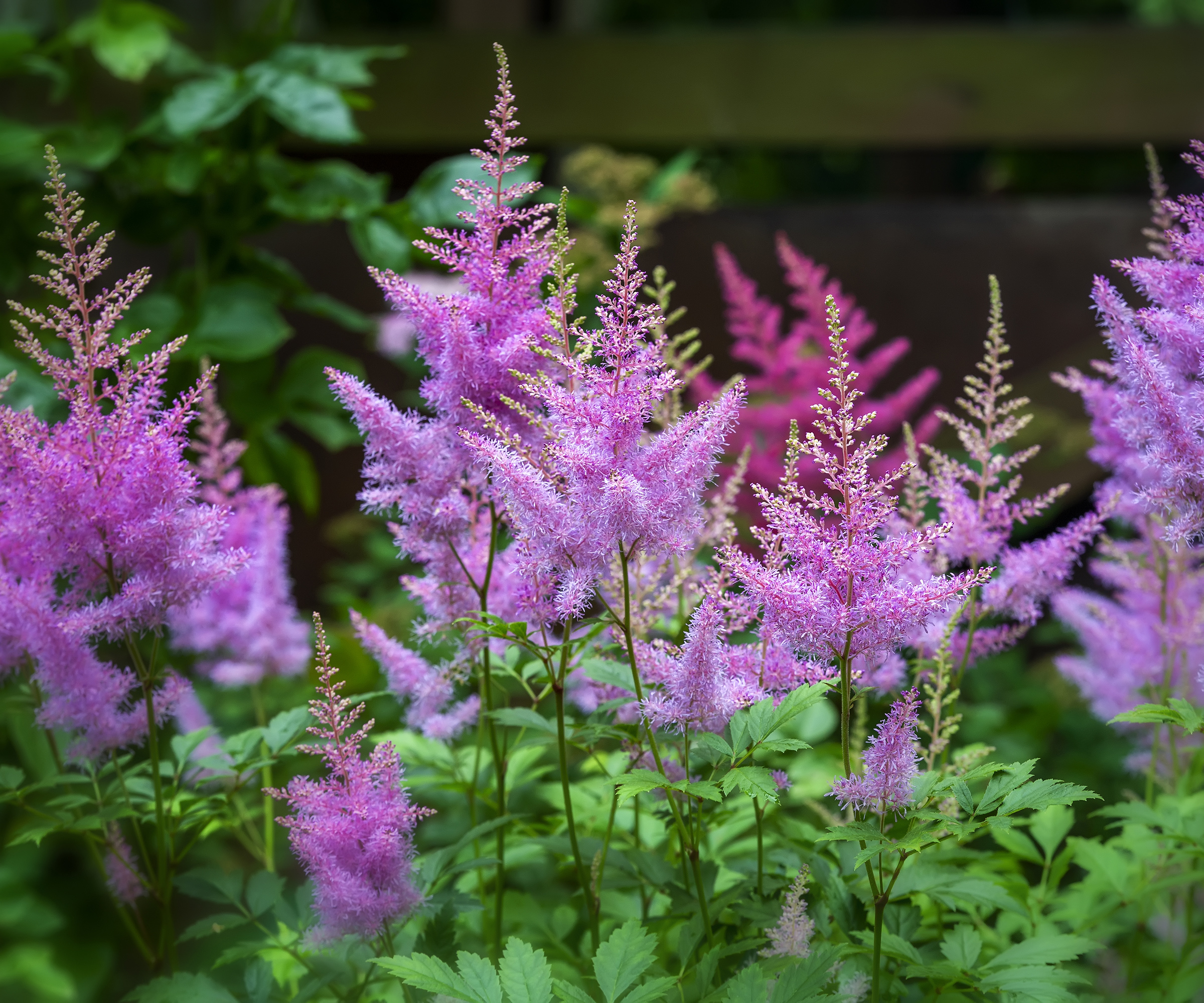
"Astilbes with their feathery, plume-like flowers are great for adding a splash of colour to shady spots under trees or next to garden fences," says Hannah.
"They come in shades of pink, red, white, and purple, blooming in mid-summer. Astilbes prefer consistently moist, well-drained soil, so mulching is a good idea to retain soil moisture," she says.
Deadheading spent flowers will encourage even more to bloom.
Astilbe Fanal False Goatsbeard 3 x 9cm pots | Was £20.97, now £15.00 at Primrose
This variety is good for dry shade as well as more moist, clay soils. They are vigorous growers and can be divided into new plants every few years.
4. Bleeding Hearts (Dicentra spectabilis)
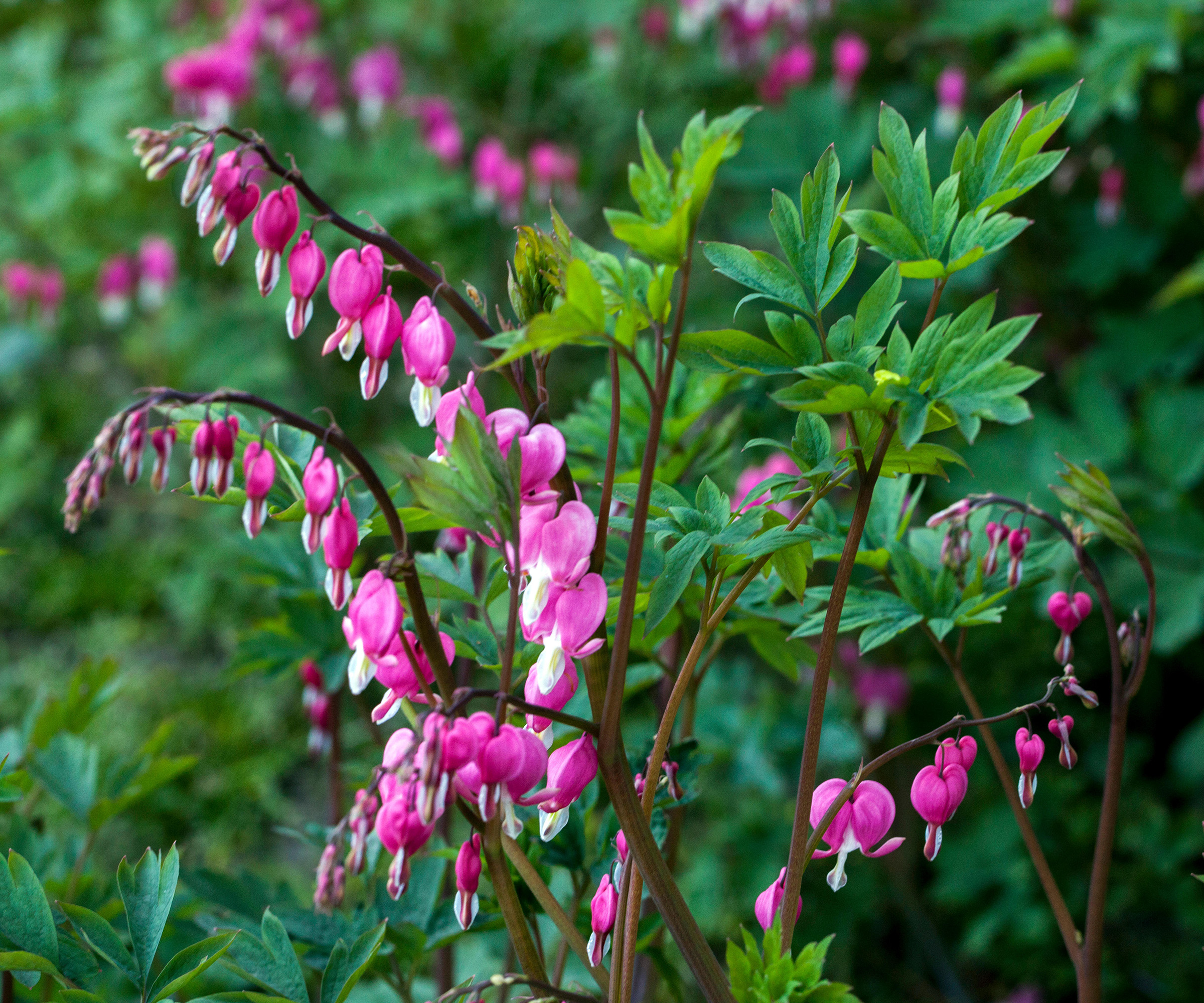
"Bleeding hearts are a charming addition to any shaded garden, with their delicate, heart-shaped pink or white flowers that bloom in spring and early summer," says Hannah Rowson.
They will grow best in rich, moist soil. You must ensure they receive consistent moisture whilst they're settling in so be prepared to water them every day even if there's rain forecast. Mulch around the base of the plant to try and retain as much water as possible.
5. Foxgloves (Digitalis purpurea)
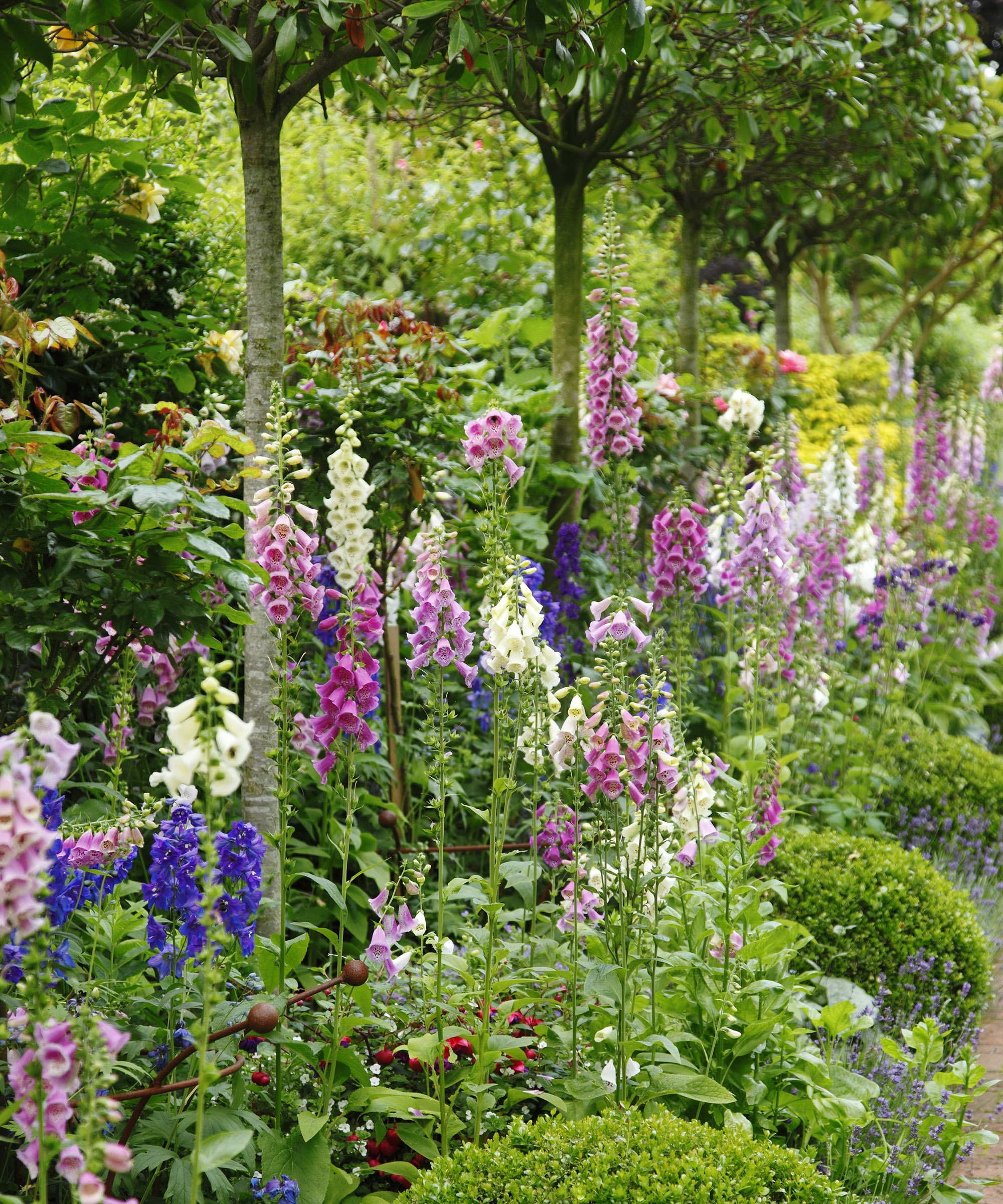
"Foxgloves are classic British garden plants, known for their tall tubular flowers in shades of purple, pink, and white. They thrive in partial shade and well-drained soil," says Hannah Rowson.
"These biennials self-seed freely, ensuring a continuous display every other year. Just be cautious, as all parts of the plant are toxic if ingested," she warns.
6. Mahonia x media
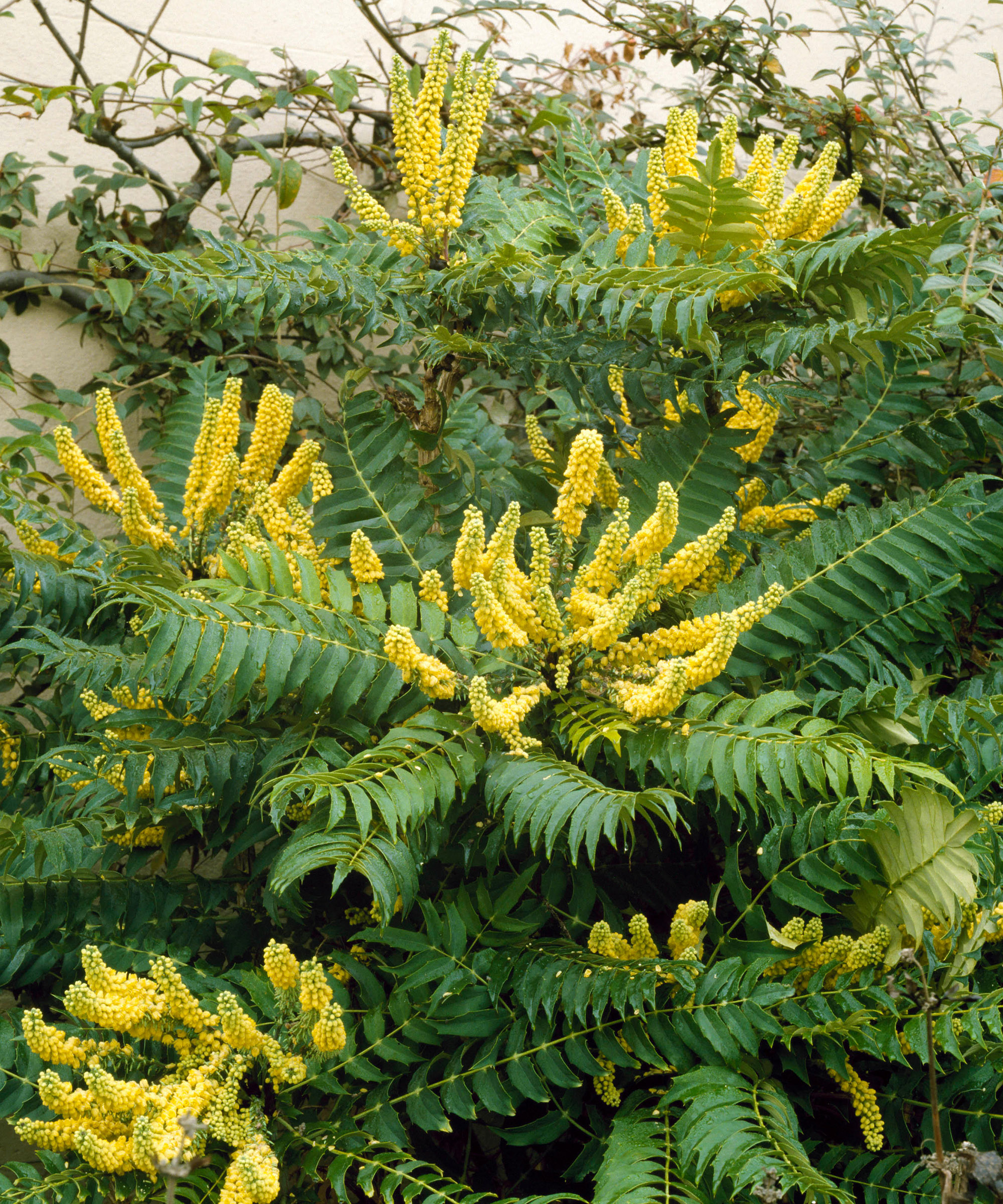
"This evergreen shrub gives much-needed flower and scent during winter and early spring. The upright fragrant yellow flowers are produced from November to March and are then followed by plum-red berries," says Nick Hamilton.
Their structural foliage will deliver interest in a border even when it's not flowering or fruiting too.
"It's drought tolerant and will be fine in any soil type in a shady spot. It will ultimately grow to a height of 4 x 3m (12 x 10ft). " It can be pruned after flowering to keep smaller, if need be," says Nick.
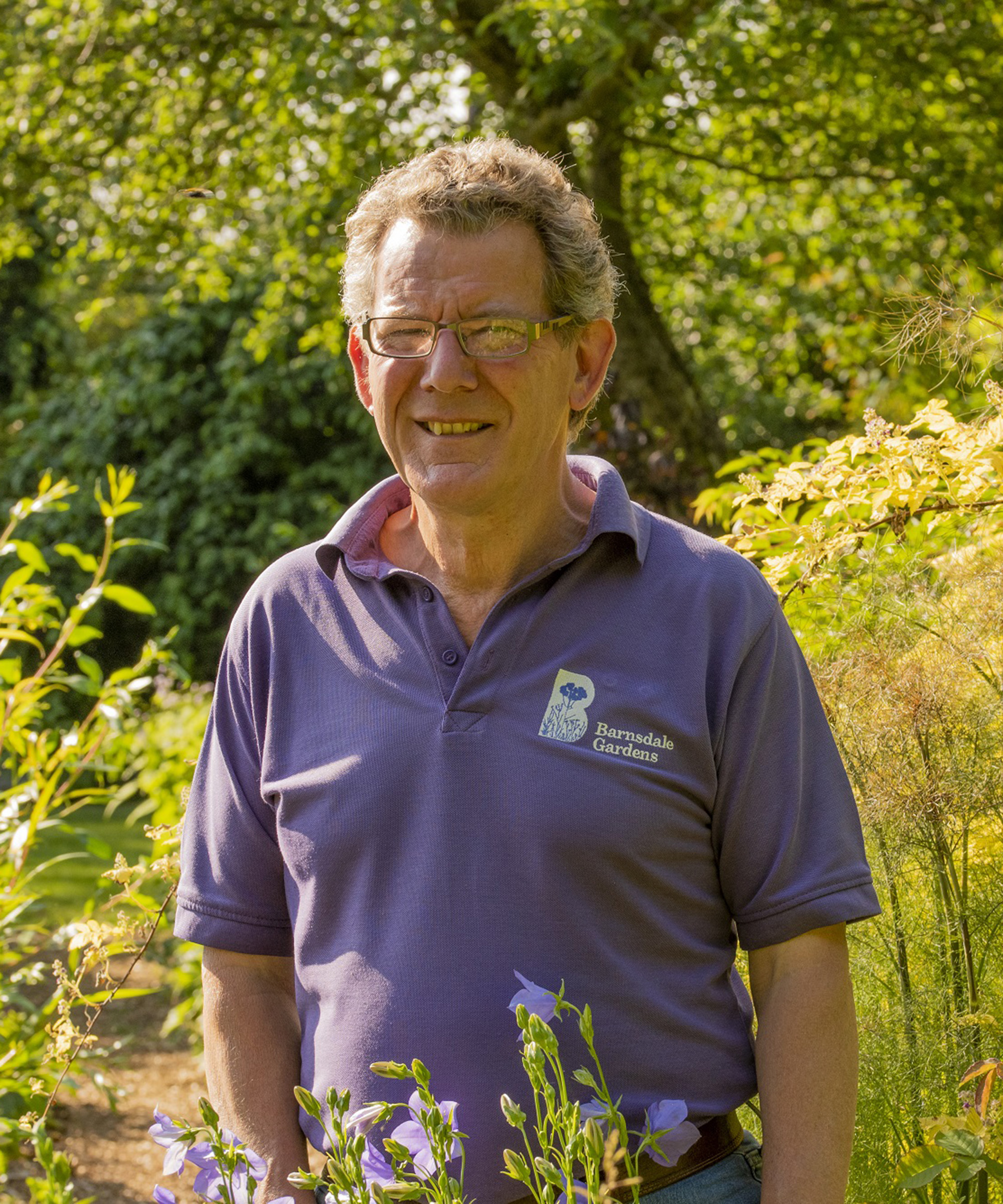
Nick's extensive gardening knowledge is the result of years of practical experience, trial and error, but also success with organic and peat-free methods. Most days, Nick can be found working at Barnsdale Gardens in his preferred "hands-on" capacity. He continues to produce exhibits that have won Gold Medals at events like Gardeners' World Live and in the Chelsea Flower Show's Great Pavilion.
7. x Heucherella ‘Sweet Tea’
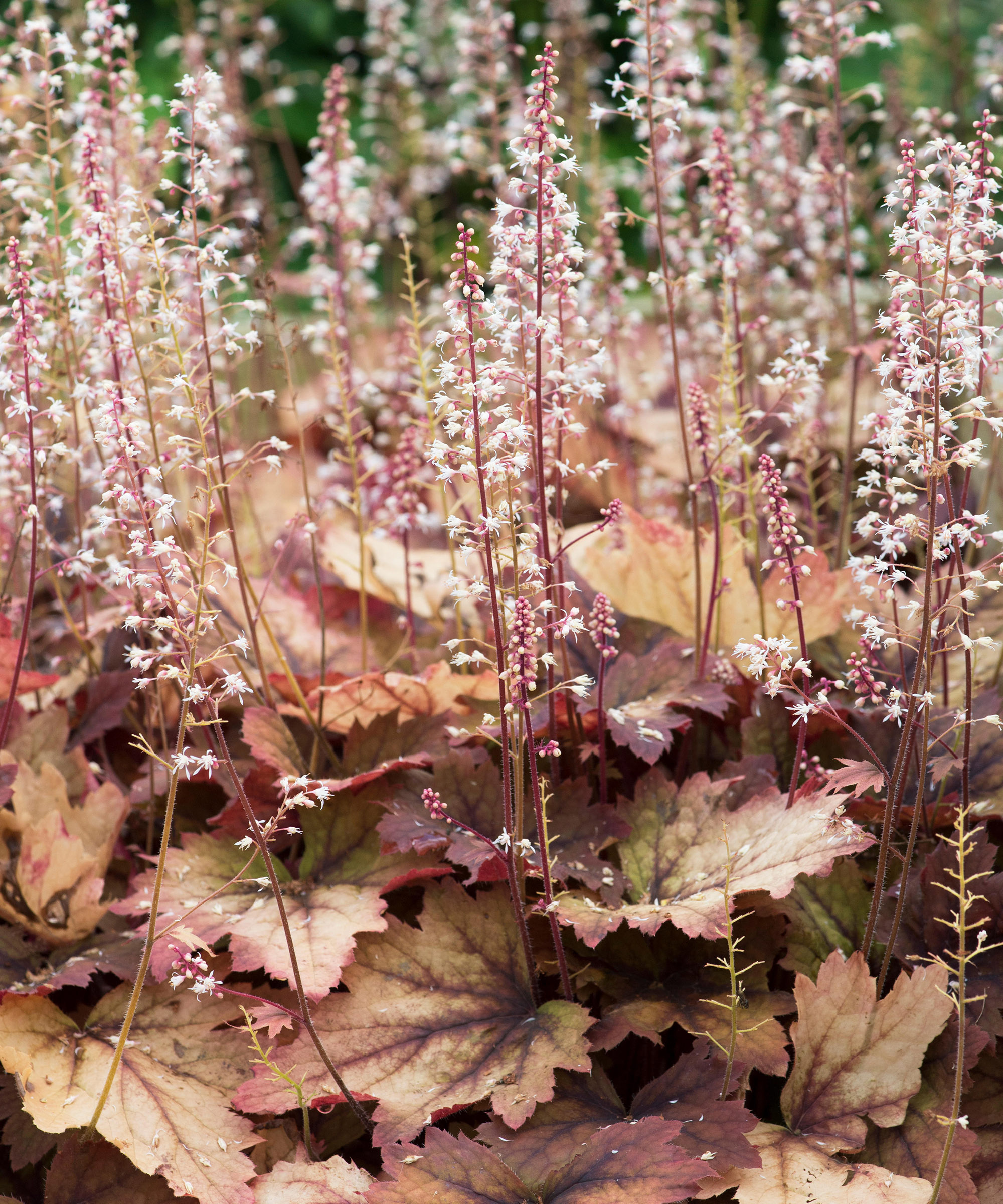
"A stunning evergreen plant, suitable to grow in shade, semi-shade or even sun. The palmate, coppery-orange leaves each have a central cinnamon star and are topped by creamy-white flowers in summer," says Nick Hamilton.
"As the weather gets colder in winter the intensity of the leave colours increases. Easy to grow, but may need an application of nematodes in spring and autumn to protect against vine weevil," says Nick.
8. Sarcococca
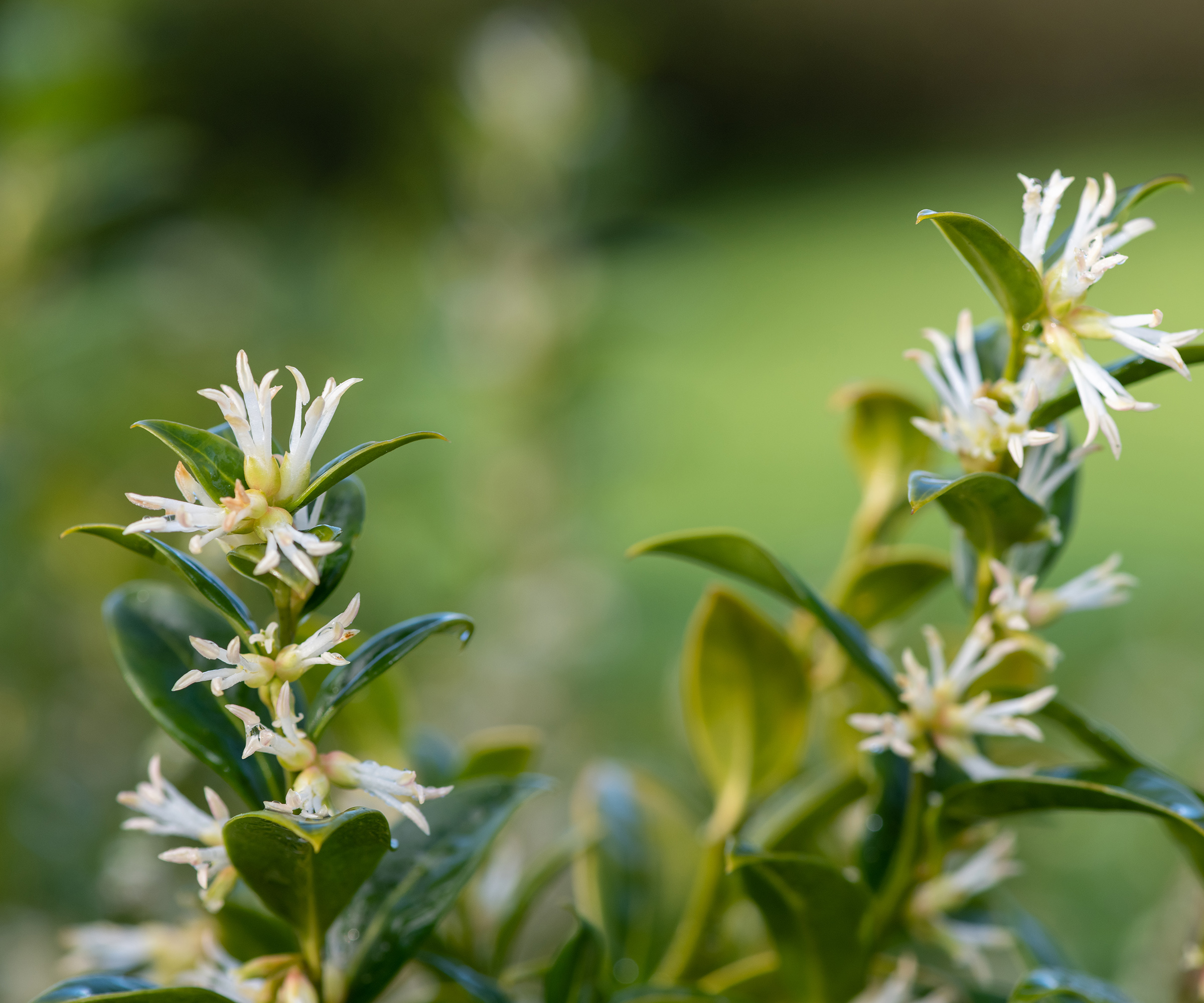
"This is an evergreen that can stomach dry shade, so it is a very useful plant indeed for those impossible places where nothing else grows. Sarcococca is a survivor. I use Sarcococca confusa and Sarcococca hookeriana for most gardens I design," says Harriet Worsley.
"Their secret weapon is their winter scent. The tiny flowers send out bursts of sweet honey scent that drifts through the winter air, and lingers for a long time," says Harriet.
"I like to mass plant Sarcococca in a driveway design, along garden paths and in corners by doorways, for a sweet-smelling winter surprise."
Sarcococca hookeriana Winter Gem - Fragrant Sweet Box | Was £17.99, now £12.99 at Gardening Express
The beauty of this plant, aside from its beautiful fragrance and foliage is that it will survive in almost any garden location, sun or shade.

Garden Designer Harriet Worsley set up Worsley Design & Consultancy after studying Garden Design, Planting Design and studying for her RHS Certificate of Horticulture. She worked as Landscape Designer for a firm in Notting Hill, and as a weekly volunteer at the Royal Botanic Gardens, Kew, where she honed her plant knowledge.
9. Japanese anemones
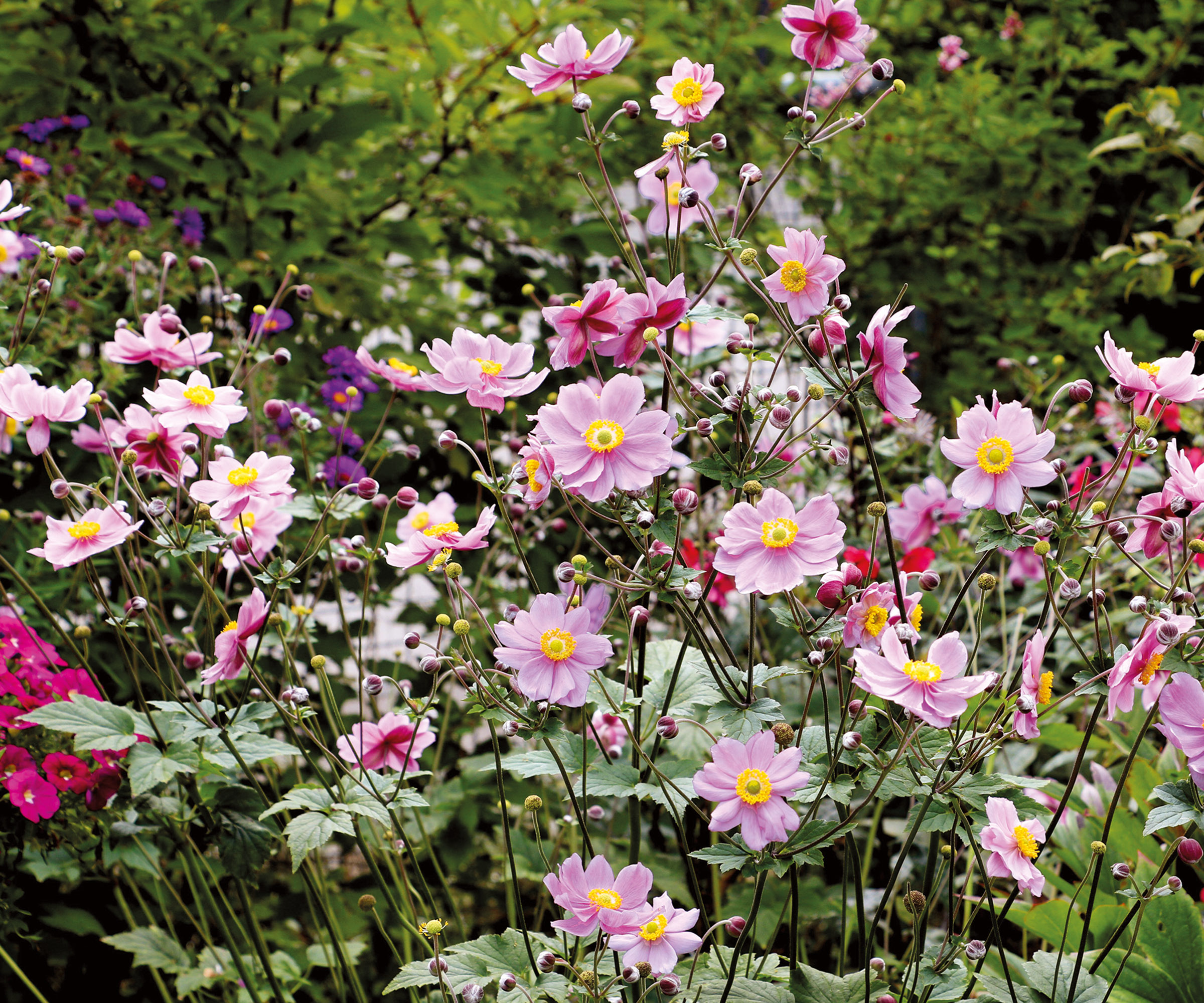
"Japanese anemones add much-needed flowers to a shady corner, but can be vigorous and slightly take over the space. Their white or pink pretty flower heads on tall waving stems look best when planted on mass," says Harriet Worsley.
"You could combine the white annual plant Cosmos in the sunny areas, with the white ‘Honorine Jobert’ anemone in the more shady corners, as the flowers look similar. Anemones flower in late summer and early autumn, so are a perfect antidote to a garden that has started to look tatty and worn by late August and September," says Harriet.
Anemone × hybrida 'Honorine Jobert' 6 x 9cm pots| Was £68.34, now £39.99 at Crocus
These late summer-autumn blooms will brighten up your shady areas. They will give height to a border too, growing to over a metre.
10. Camellias
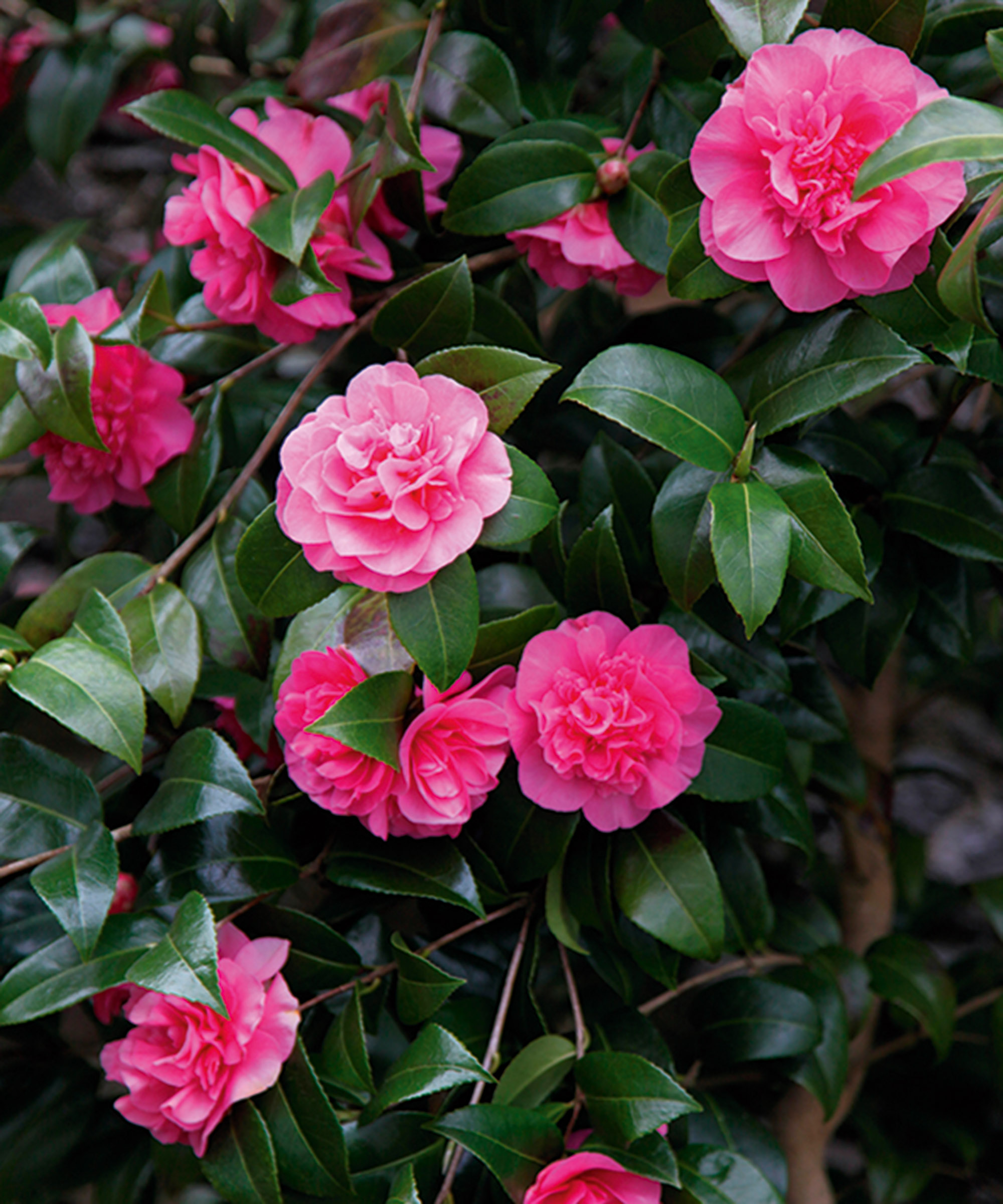
"These slow-growing shade-loving beauties are like roses in the winter, and provide fabulous blooms in every shade of pink and white. The leaves are glossy, and provide a dark evergreen backdrop to a garden space; but when the plant flowers it lights up the garden," says Harriet.
"I like to use the bright pink autumn-flowering Camellia sasanqua, and then the loose single or double whites for flowers in February. One tip - don’t plant them in an east-facing bed, as the morning frost melting on the flowers causes them to turn brown and drop. Plant Camellias with ericaceous compost around the roots as they like acid soil," says Harriet.
11. Rose 'Stanwell Perpetual'
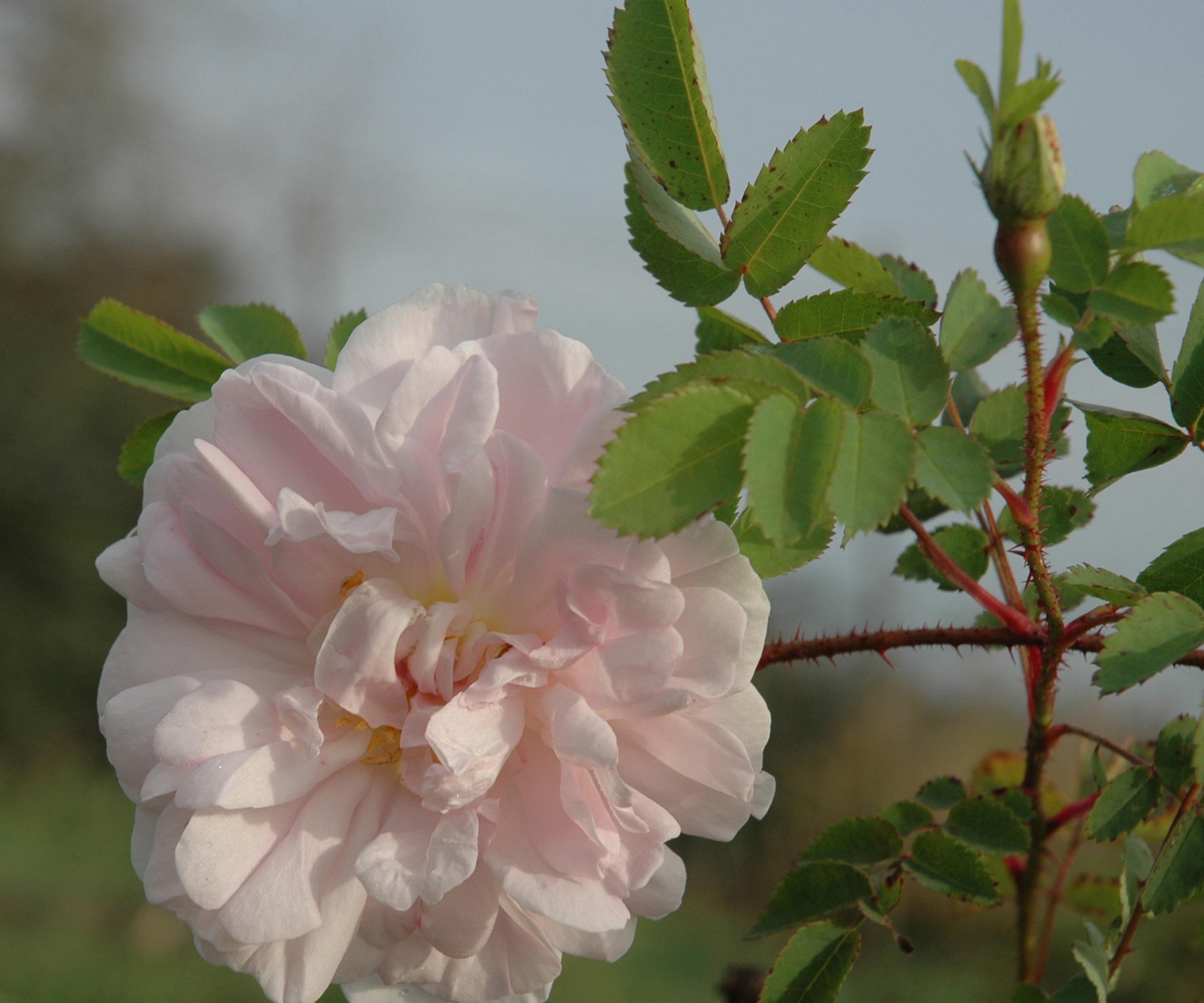
"Whilst roses – like most flowers – prefer to bask in beautiful warm sunlight, some varieties are more tolerant of partial shade than others and can be safely planted against garden walls or other parts of the garden that might not get full sun," says Ian Limmer, Nursery Manager at Peter Beales Roses.
"These varieties include the Oxford Physic Rose, Blanc Double de Coubert, Stanwell Perpetual, Prosperity, Penelope, Festive Jewel and Beryl Felicia Manthorp."
"'Stanwell Perpetual' (pictured above) is a prickly, arching shrub which blooms all summer with an array of medium-sized, blush pink to white, double, fragrant flowers. It's tolerant of poorer soils and shade. You can grow it happily in a container or even as a hedge," says Ian.
12. Euphorbia amygdaloides

"There are a lot of spurges out there, but Wood spurge is one of my favourites. It blooms in late spring with lime-green flowers above dark green leaves. It's perfect for dry shade under trees and woodland borders," says Jane Dobbs, garden expert at Allan's Gardens.
Be aware that spurges emit a milky sap, which is poisonous if ingested and a serious irritant to the skin and eyes so it’s important that you wear gloves, long sleeves and even goggles when handling them. Plant them away from areas that children play in too.
Try Euphorbia Amygdaloides Var. Robbiae Wood Spurge at Primrose.

Responsible for leading the gardening team at Allan's Gardeners, a landscaping and garden maintenance, business who do lawn care and installation. She has 10 years experience as a gardener.
FAQs
What is the best plant for deep shade?
"The stinking iris loves full shade, especially under trees. Despite its architectural evergreen foliage and dull purple-green flowers, it really shines in autumn when its large seedpods split open to reveal rows of orange-red seeds," says garden expert Jane Dobbs of Allan's Gardens.
"The spotted laurel, or Japanese laurel, has glossy leaves with delicate yellow and green accents. You can enjoy this eye-catching plant all year long. Plant it at any time of year, in partial shade or full shade depending on the variety," says Jane.
Dryopteris filix-mas is a deciduous fern that can cope with quite deep shade. Lilyturf is another option for deep, dry shade; unlike most shade-loving flowers, its spires are not white but a vibrant violet that will bloom from August to November.
Many gardens will have areas of sun as well as shade. For creating a shaded seating area have a look at our pergola ideas.
Get the Homebuilding & Renovating Newsletter
Bring your dream home to life with expert advice, how to guides and design inspiration. Sign up for our newsletter and get two free tickets to a Homebuilding & Renovating Show near you.

Teresa was part of a team that launched Easy Gardens in 2018 and worked as the Editor on this magazine. She has extensive experience writing and editing content on gardens and landscaping on brands such as Homes & Gardens, Country Homes & Interiors and Living Etc magazine. She has developed close working relationships with top landscape architects and leading industry experts, and has been exposed to an array of rich content and expertise.
In 2020 Teresa bought her first home. She and her partner worked alongside architects and builders to transform the downstairs area of her two bedroom Victorian house in north London into a usable space for her family. Along the way she learned the stresses, woes and joys of home renovation, and is now looking to her next project, landscaping the back garden.
